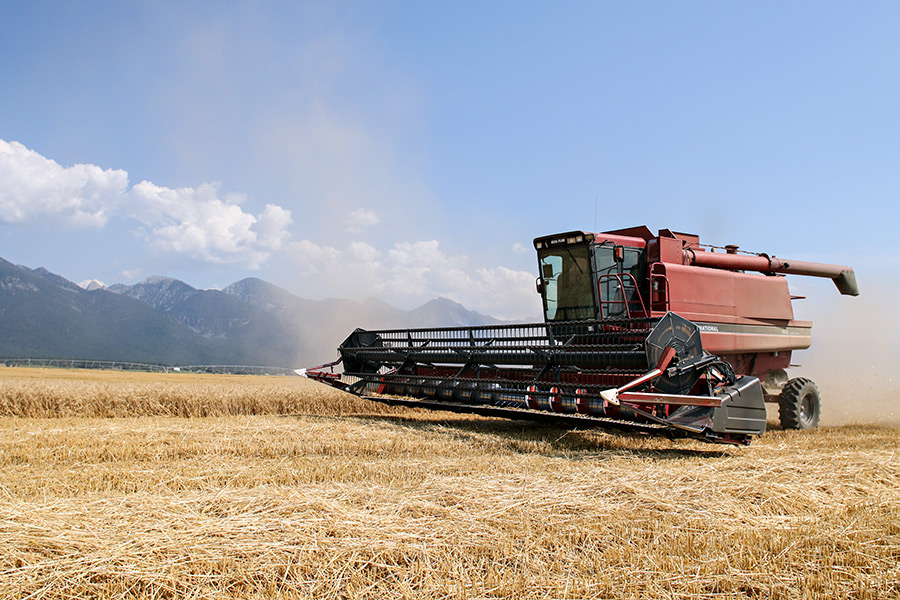The federal Farm Bill is a massive piece of legislation, one that determines the country’s direction on nearly every aspect of agricultural life.
Passed every five years, the $867 billion Farm Bill touches on everything under the U.S. Department of Agriculture’s control, from commodity programs and trade to conservation, rural development, food and nutrition programs, and research.
America continues to churn under the 2014 Farm Bill, with a new iteration expected by the end of this month. However, the 2018 Farm Bill, officially known as the Agricultural and Nutrition Act of 2018, continues to languish in conference committee, after the U.S. Senate and House found themselves at odds with one another over the legislation.
The current Farm Bill expires Sept. 30, and as of Sept. 24, the conference committee had not reported any major breakthroughs on a new bill.
One of the biggest roadblocks in the bill’s journey to passage has been the discussion over adding new eligibility requirements to the Supplemental Nutrition Assistance Program (SNAP), the country’s main food-assistance program. SNAP makes up about 80 percent of spending in the Farm Bill, feeding about 42 million Americans at an average cost of $1.86 per meal.
House Republicans are seeking to add stricter work requirements to be eligible for SNAP benefits. Under the current bill, adults ages 18-59 who receive SNAP benefits must be working part-time or agree to accept a job if they’re offered one. There are stricter rules for able-bodied adults between the ages of 18 and 49, who have a three-month benefit limit in three years unless they meet a work requirement of 80 hours a month.
Under the House’s version of the bill, the work requirements would expand to all adults capable of work to have a job or participate in work training for at least 20 hours per week. Seniors, pregnant women, caretakers of children younger than 6, and people with disabilities would stay exempt. Democrats said the changes would cause 2 million people to lose their food assistance.
The Senate’s version of the 2018 Farm Bill largely left SNAP alone, and Senate Agriculture Committee Chairman Pat Roberts, R-Kansas, has said the increased work requirements will make it difficult to pass in the Senate.
Now the bill sits in conference committee, where a bipartisan group of senators and representatives are hashing out their differences. If the committee doesn’t come up with a new bill by the deadline, Congress has the option to extend the current bill.
In Montana, as of July 2018, more than 65,200 adults receive SNAP benefits, as well as more than 47,300 children, according to the Department of Public Health and Human Services. Flathead County had 5,744 adults and 3,982 children receiving SNAP benefits.
SNAP recipients can use their benefits at 22 farmers markets in Montana, according to the state Department of Agriculture, and in many cases can receive double the benefit at the markets through a special program.
Pam Gerwe of Purple Frog Gardens in Whitefish said that while SNAP customers don’t necessarily boost profits, it’s important for local people to be able to access local food.
“There’s a bigger thing that we need to be addressing here as far as the illusion that it’s just poor people not working,” Gerwe said. “It’s not; it’s working poor people.”
Gretchen Boyer, program director at Farm Hands: Nourish the Flathead, said her organization supports the Senate’s version of the Farm Bill. Farm Hands helped usher in the double SNAP benefits at farmers markets in Columbia Falls and Whitefish, and Boyer said it will be expanded to Kalispell. Last year, the double SNAP dollars added $8,000 into the markets, she said.
“For us, our whole gig is food access,” Boyer said. “We want our community members to be able to access our local food system and we want to keep our dollars here.”
Montana Rep. Greg Gianforte, a Republican, sent a Sept. 12 letter to the conference committee, urging support for the price-loss coverage and agriculture-risk coverage programs, the no-cost domestic sugar program, the Agriculture Research Service, the Farm Credit System, and the Farm and Ranch Assistance Network. Gianforte also asked for forest-management reform.
“Greg hopes conference committee members will iron out their differences soon and get a Farm Bill together so our farmers and ranchers have greater certainty,” said Gianforte spokesperson Travis Hall. “Greg has made his priorities clear for what he wants in the Farm Bill so that it works for Montana.”
U.S. Sens. Jon Tester, a Democrat, and Steve Daines, a Republican, both supported the Senate’s version of the bill.
Montana Department of Agriculture Director Ben Thomas said the state is keeping a close eye on the Farm Bill’s progress.
“We have been following the developments related to the Farm Bill very closely,” Thomas said. “Certainly we have always maintained that the cornerstone of a good Farm Bill is a strong nutrition title, and we were enthused to see the Senate take a more pragmatic and bipartisan approach to the bill. We were also glad to see continued support for the Specialty Crop Block Grant program, which is an important grant program for Montana.”
